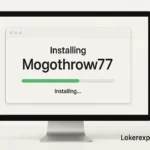Introduction
In recent months, a data bundle dubbed AIO-TLP370 began surfacing in underground forums with references back to thejavasea.me. The name suggests an all-in-one archive containing credentials, access logs, and assorted files. While many claims about its scale and sensitivity are circulating, mainstream, independent verification is scarce—and uncertainty is high.
This article gathers the best publicly available information, outlines the possible risks for individuals and organizations, describes how security experts validate such leaks, and offers clear, actionable steps you can take right now to check exposure and mitigate damage. It also explores how to interpret claims, prioritize responses, and maintain security even when dealing with fragmented leak narratives.
What the AIO-TLP370 Leak Claims to Be
-
“AIO” as aggregation. The label implies a composite archive containing multiple datasets—user credentials, system logs, metadata, and more.
-
“TLP370” as naming convention. Unlike the standard Traffic Light Protocol (TLP) used in security circles, the “370” suffix is likely a forum or dump-site naming marker—not a formal classification.
-
Source appearance. Most references originate in niche tech forums and thejavasea.me postings. These often present index screenshots or sample entries to attract attention.
-
Stated content. Leak posters claim millions of records, cross-service credentials, internal system logs, and other sensitive materials. Because of the mixed claims, the true composition is not yet confirmed.
Why This Leak Should Concern You
-
Credential reuse risk. If your email or username + password appears in the leak—even if it’s an old breach—it could help attackers access other accounts.
-
Insider data amplification. If internal logs or system files are genuine, they may reveal access patterns, backend structures, or trust relationships.
-
Acceleration of attacks. Leaked credentials and related metadata reduce the attacker’s time and guesswork; they can speed up phishing, brute force or takeover campaigns.
-
Psychological and reputational impact. The mere presence of your identifiers in a leak can erode trust and induce stress—even if no damage is realized.
How Security Professionals Assess Leak Credibility
When confronted with a leak claim like AIO-TLP370, expert teams typically:
-
Analyze sample entries carefully. They look for a small, non-sensitive sample that can be cross-verified against known datasets without exposing new personal data.
-
Match signatures to known breaches. If large portions of the leak overlap with previously confirmed data (e.g. old hacked databases), it suggests re-use rather than a wholly new compromise.
-
Inspect metadata and file structure. Timestamps, file headers, and packaging styles can show whether the leak is from a single source or a composite.
-
Seek independent corroboration. Other trusted researchers or organizations validating the same leak is a strong trust signal—especially if they share non-sensitive data points.
-
Track announcements or vendor confirmation. If a company says “our system was breached and data from your service is in that dump,” it helps tie claims to reality.
Given the current state, AIO-TLP370 is heavy on claim but light on public forensic detail. That means vigilance is warranted—but not panic.
What You Should Do Now (Individual Steps)
-
Check your email/username in breach databases. Use reliable services to see if your credentials appear in any known breach.
-
Change passwords where necessary. If a password was reused across multiple sites, update it immediately—make sure each account has a strong, unique password.
-
Activate multi-factor authentication (MFA). Wherever possible, turn on MFA to add a barrier against account takeover.
-
Watch for phishing and suspicious access. Leaks often lead to targeted phishing, reset attempts or login alerts. Be cautious of unexpected emails or messages requesting credentials.
-
Keep systems patched and scanned. Update operating systems, firmware, antivirus definitions, and run deep scans after any unusual behavior.
These steps are widely endorsed in cybersecurity best practices and are low cost yet high benefit—even if a leak turns out to be partially fictitious.
Organizational & IT Team Actions
-
Assume worst for reused credentials. Immediately force password rotations for accounts possibly affected, and apply tight access controls.
-
Mandate MFA for all privileged or internet-accessible accounts. It’s among the most effective defenses.
-
Audit logs and monitor anomalies. Look for logins or access from suspicious IPs, times, or contexts that match indicators from leak samples.
-
Rotate secrets and keys. If there is a chance that API keys, tokens or internal credentials were included, rotate them proactively.
-
Engage incident response. If the leak could affect your organization, call in forensic responders or partner with managed security service providers to validate samples, assess impact, and coordinate containment.
Red Flags vs Green Flags in Leak Claims
Red Flags (suggest lower credibility):
-
Single anonymous forum post with no follow-up
-
Grand numbers with zero sample evidence
-
Paywalls, pressure or sensational marketing
-
No overlap with known breach sources
Green Flags (lend credibility):
-
Multiple independent researchers reporting consistent data
-
Shared but sanitized samples validated against known data
-
Confirmation from affected vendors or organizations
-
Transparent methodology in writeups
At present, AIO-TLP370 signals are mixed—more red flags than green. Proceed with precaution and verification.
How to Talk About the Leak Publicly
If you need to notify users or stakeholders:
-
Be transparent about what you do know—and what remains uncertain.
-
Clarify steps you have taken (log audits, sample cross checks).
-
Provide concrete remediation (forced resets, MFA rollouts).
-
Offer a contact point for questions, and commit to updates as new data emerges.
-
Avoid hype or exaggeration; credibility is built through calm, clear communication.
What We Still Don’t Know
-
Definitive proof that AIO-TLP370 is a single, cohesive leak vs. a stitched archive
-
Attribution: who compiled or released it, and when
-
Complete list of affected systems, companies or services
-
Level of fresh vs. recycled content (how much is new vs. rehashed from prior breaches)
Until independent forensic reports emerge, treat all claims as plausible but provisional.
Read More: Balancing Family Fun and Finances: Creative DIY Projects That Don’t Break the Bank
Conclusion
The AIO-TLP370 leak, circulated via thejavasea.me and echoed through various forum reposts, typifies a trend in breach culture: large, ambiguous dump claims built more on noise than verifiable substance. While many posts assert millions of exposed records and internal logs, solid, public forensic confirmation is lacking. That uncertainty doesn’t justify inaction—nor does it mandate panic. Instead, respond smartly: use trusted breach-monitoring services, change reused passwords, enable MFA universally, and, for organizations, bring in professionals to validate and contain potential damage.
The real power lies not in chasing every sensational claim, but in executing the time-tested steps that blunt exposure risk and harden systems for the next inevitable leak.
FAQs
-
What was AIO-TLP370 from thejavasea.me?
It’s the label used by leak posters to bundle credentials, logs, and assorted files in a single archive. Its precise contents are not yet fully verified. -
Can I check if my email is in that leak?
Yes—use reputable breach databases to see if your address or username appears in known leaks. If it does, take immediate steps to protect accounts. -
Should I attempt to download the dump to inspect it?
No. Leaked archives often contain illegal or copyrighted content and may harbor malware. Investigations are better left to qualified security teams. -
What do I do if my credentials show up in that leak?
Change the affected password everywhere it was used, enable MFA, monitor for suspicious logins, and scan your systems for malware. -
How can I know if leaks like AIO-TLP370 are legitimate?
Look for corroboration from independent security researchers, shared sanitized samples, and vendor acknowledgments. Claims without those are far less reliable.










